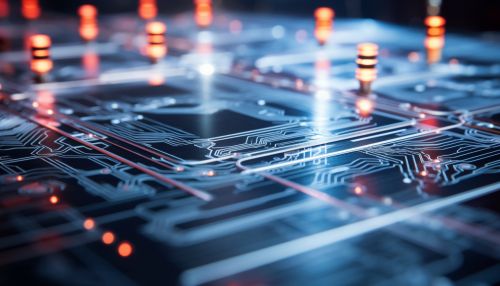Advances in Nanoscale Fluid Dynamics and Microfluidics
Introduction
Nanoscale fluid dynamics and microfluidics are fields of study that have seen significant advances in recent years. These disciplines focus on the behavior, precise control and manipulation of fluids that are geometrically constrained to a small, typically sub-millimeter, scale. Nanoscale fluid dynamics specifically deals with the study of fluid flow at the nanometer scale, while microfluidics is the science of designing, manufacturing, and formulating devices and processes that deal with volumes of fluid on the order of nanoliters or picoliters.


Theoretical Advances
Theoretical advances in nanoscale fluid dynamics and microfluidics have been driven by developments in mathematical models and computational fluid dynamics (CFD). These models allow for the simulation of fluid flow at the nanoscale, providing insights into phenomena that are difficult to observe experimentally. For instance, the Navier-Stokes equations, which describe the motion of fluid substances, have been adapted to account for the unique properties of fluids at the nanoscale.
Experimental Advances
Experimental advances in the field have been facilitated by the development of new fabrication techniques for microfluidic devices. These techniques, such as soft lithography and micromilling, have enabled the creation of devices with complex geometries and features on the order of tens to hundreds of nanometers. These devices have been used to study a wide range of phenomena, from the behavior of colloids and polymer solutions at the nanoscale, to the manipulation of biological entities like cells and DNA.
Applications
The advances in nanoscale fluid dynamics and microfluidics have led to a wide range of applications. In the field of biology and medicine, microfluidic devices have been used for DNA sequencing, cell sorting, and the study of single-cell behavior. In the chemical industry, these devices are used for the synthesis of nanomaterials, with precise control over their size, shape, and composition. In the energy sector, understanding of nanoscale fluid dynamics is crucial for enhancing oil recovery and developing more efficient fuel cells.
Future Perspectives
The future of nanoscale fluid dynamics and microfluidics is promising, with potential advances in both theoretical understanding and practical applications. The development of more accurate and efficient computational models will enable better prediction and control of nanoscale fluid behavior. On the application front, the integration of microfluidic devices with other technologies, such as electronics and photonics, opens up new possibilities for lab-on-a-chip systems, point-of-care diagnostics, and more.
